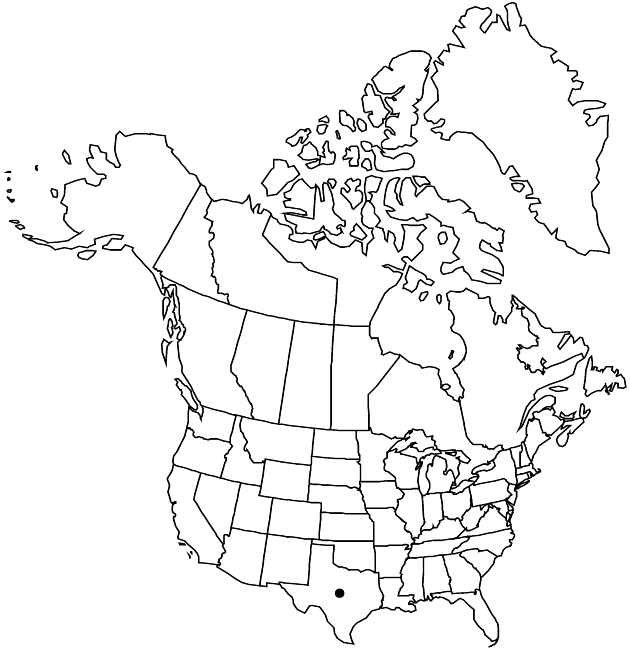Difference between revisions of "Senecio quaylei"
Sida 19: 286, figs. 1, 2. 2000.
FNA>Volume Importer |
imported>Volume Importer |
||
| (6 intermediate revisions by 2 users not shown) | |||
| Line 24: | Line 24: | ||
|distribution=Tex. | |distribution=Tex. | ||
|discussion=<p>Of conservation concern.</p><!-- | |discussion=<p>Of conservation concern.</p><!-- | ||
| − | --><p>Senecio quaylei resembles S. ampullaceus; it is more robust and glabrous, and has prominently clasping mid-cauline leaves. The size and robustness suggest that it may be a polyploid derivative of S. ampullaceus.</p> | + | --><p><i>Senecio quaylei</i> resembles <i>S. ampullaceus</i>; it is more robust and glabrous, and has prominently clasping mid-cauline leaves. The size and robustness suggest that it may be a polyploid derivative of <i>S. ampullaceus</i>.</p> |
|tables= | |tables= | ||
|references= | |references= | ||
| Line 33: | Line 33: | ||
-->{{#Taxon: | -->{{#Taxon: | ||
name=Senecio quaylei | name=Senecio quaylei | ||
| − | |||
|authority=T. M. Barkley | |authority=T. M. Barkley | ||
|rank=species | |rank=species | ||
| Line 48: | Line 47: | ||
|publication year=2000 | |publication year=2000 | ||
|special status= | |special status= | ||
| − | |source xml=https:// | + | |source xml=https://bitbucket.org/aafc-mbb/fna-data-curation/src/2e0870ddd59836b60bcf96646a41e87ea5a5943a/coarse_grained_fna_xml/V19-20-21/V20_1249.xml |
|tribe=Asteraceae tribe Senecioneae | |tribe=Asteraceae tribe Senecioneae | ||
|genus=Senecio | |genus=Senecio | ||
Latest revision as of 19:59, 5 November 2020
Annuals, 80–120 cm (taproots surrounded by fibrous roots). Herbage glabrous or sparsely hairy. Stems single. Leaves evenly distributed; petiolate; blades ovate, 12–24 × 8–12 cm, bases tapered or contracted, margins wavy and dentate to denticulate (mid leaves sessile, ovate to broadly lanceolate, nearly as large as basal and proximal; distal sessile, lanceolate to linear-lanceolate, becoming bractlike). Heads 20–40+ in corymbiform arrays or cymiform clusters. Calyculi of 2–7 bractlets (1–3 mm). Phyllaries ± 13, 7–9 mm, tips green to grayish. Ray florets ± 8; corolla laminae 7–10 mm. Cypselae hirtellous.
Phenology: Flowering spring.
Habitat: Open, disturbed sites, especially roadsides
Elevation: 200–400 m
Discussion
Of conservation concern.
Senecio quaylei resembles S. ampullaceus; it is more robust and glabrous, and has prominently clasping mid-cauline leaves. The size and robustness suggest that it may be a polyploid derivative of S. ampullaceus.
Selected References
None.
